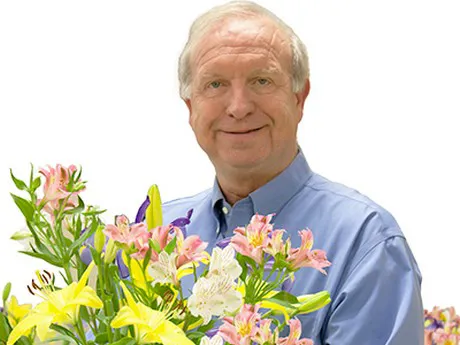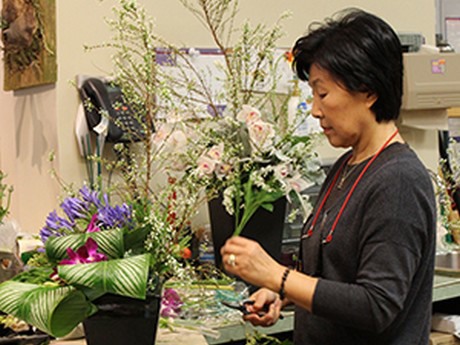The biological mechanisms governing flower life and quality are complex, but the practices recommended for growers, wholesalers and retail florists are really quite simple.
AFE-supported research confirms that there are three keys to quality: cold, cleanliness and careful processing.

Terril Nell, Ph.D.
Keep flowers cold (33 – 36° F)
Temperature is the major factor governing flower life. Cold temperatures conserve the sugars stored in the leaves and stems needed for flowers to open and remain viable.
Supplemental sugars provided by flower foods serve as a critical back-up to stored sugars. Cold temperatures also make flowers less sensitive to their archenemy – ethylene. Keeping flowers cold (33 – 36° F) from the time of harvest through shipping, storage and display significantly increases flower life.
Some believe that temperatures in the 40s are acceptable, but these warmer temperatures are in fact shortening vase life. Retail florists should assure that cooler temperatures are never higher than 36° F and should buy from wholesalers who keep coolers and vehicles cold.

Be clean everywhere and always
These tiny spores cannot be seen, so fighting them effectively involves sanitizing work spaces. Cutting tools and design tables should be cleaned several times daily. Floors in the design room or at wholesale florists should be mopped with an anti-fungal solution daily. Clean conditions limit the spread of diseases such as Botrytis, and help to control the presence of microbes in vase solutions. Diseases on leaves and petals are spread by air movement and water, contaminating design tables, cutting tools, hands and clothes.
Run aprons through a hot wash, and encourage designers to wash their hands frequently. Cooler walls should be cleaned monthly. Microbes can contaminate vase solutions, obstructing water absorption by cut flowers, and causing flowers to die prematurely and/or fail to open.
Microbes reside in dirty buckets and containers, on cutting tools and on leaves and stems. Properly mixed flower foods will help to limit the growth of microbes by lowering solution pH.
Inspect, process and hydrate
Inspect flowers for insects and diseases upon arrival. Re-cut stems dry (not under water) and place into properly mixed hydration solutions (at wholesale florists) or flower food solutions (at retail florists). Then, move the flowers to your cold cooler until sold. Rotate product – first in, first out. Use your oldest flowers first every day.
The value of using properly mixed hydration and flower food solutions is sometimes questioned as too costly, but years of research have demonstrated time and again that flower foods extend flower life. Including packets of flower foods with bouquets and arrangements is strongly encouraged.
For more information
American Floral Endowment
T: +1 (703) 838-5211
www.endowment.org/research
